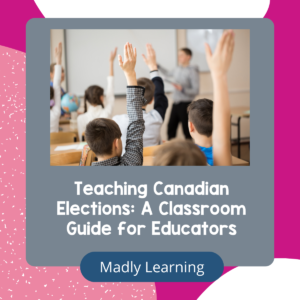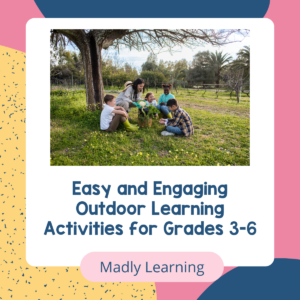Do your students know what is expected of them?
Are these expectations posted and clear for students to use? Do they use them?
It seems obvious to say that students should probably understand what it is that they are supposed to do each day. They should have a clue about what they are learning.
I mean we probably tell them over and over what they are doing but are they really listening?
Sometimes school is a game that students play. They can coast through the game without really understanding what it is they are doing and why they are doing it. They just simply do what they are told with very little critical thought as to why they are doing it.
This bugs me…in part because I was that child.
It left me with gaps in my own learning and surprises once I got older and realized that I needed to play catchup.
Success Criteria seems sometimes like a make-work project, given to teachers by principals and consultants. Words on a wall that students barely look at and waste our time.
and yes this is one-way success criteria is used.
So how do we get it off the walls and into the minds of our students so that instead of it being there for the adults in the building to meet some staff meeting agenda item and move it towards a real and meaningful purpose in our classroom?
First, make it with your students…and post what you actually make with them (even it is not Pinterest Worthy)
This drives me crazy that my messy, in the moment printing, is what students use the most…but it is. With two simple materials a chart paper and a marker you can help your students to learn what is expected of them. The conversation goes something like this
Teacher: Today we are going to learn about how to write a story. What things do you think all stories have?
Student: characters…..where the story takes place….a beginning, middle and end…
Teacher writes this all down in a list….
Students: a problem….characters that talk…
Teacher: So if this is what is in a story then what makes it a good story? What is the difference between a poor story, a good story? (teacher makes a T chart). Using a sticky note I want you to write me some sentences that describe what a poor story has and what a good or great story has. Then I want you to add it to the chart paper. (remind them not to focus on spelling, grammar, or punctuation)
This is the beginning of your success criteria. Looking at the student’s sticky notes you get an idea of what makes a good story. Now at this point, you don’t have to go much beyond their ideas and their requirements do not have to be exhaustive. You can add more as they learn more.
Once you look at the list of student questions look for themes and group their answers together. From here make a checklist of ideas that they came up with.
Share these with your class and post these for them to see in the classroom.
Model It
So it is not enough for you to just make them but you must show them how to use it over and over.
Refer to the success criteria list each time you teach a related topic. Remind them of the things you are looking for.
- Point to It
- Touch It
- Add examples around it
- Encourage students to walk up to it and reference it.
- Make a ‘Bump It Up’ board related to it.
When they see how this chart of words are used and how it can help them, they are more likely to use it themselves.
Give it a purpose
not only is this a list of things that you are doing in your class but it is also the thinks that you are looking for them to learn. This is a list of objectives, in student-friendly language that tells them what they are learning and why.
If the words are meaningless to them then why would they look at them?
These success criteria pages (and everything else) we hang on our walls should serve a purpose to share learning with our students.
Another reason we use success criteria is that we want to know that our students know the answers to two questions in everything we do.
- What are you doing?
- Why are you doing it?
and the answer isn’t…because my teacher told me to.
In an inquiry-based classroom (and all classrooms) you want the students to be active participants in their learning. They need to be involved in what is happening and how that happens. Without a purpose, they are bored and disengaged. This disengagement is what leads to issues with classroom management.






